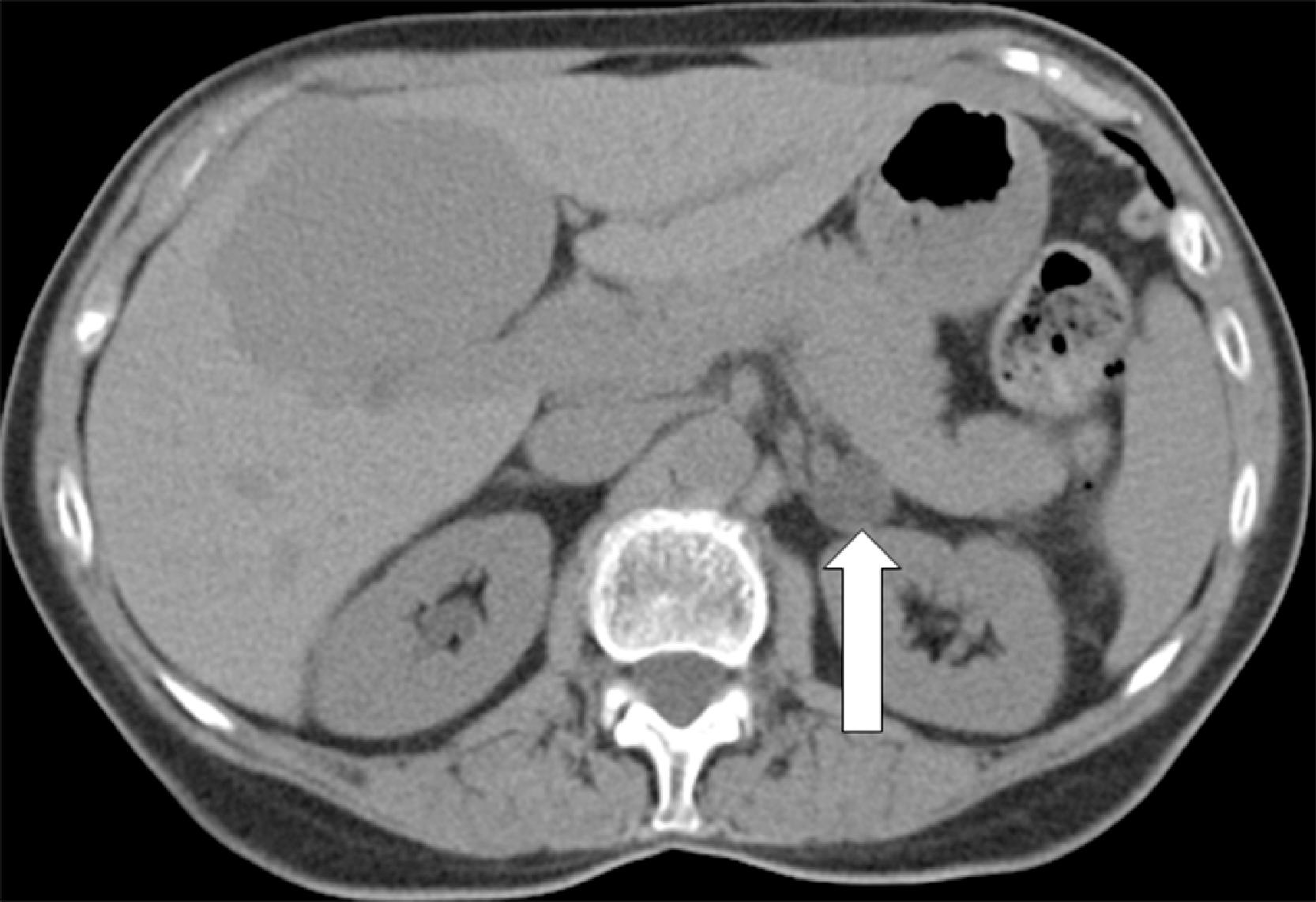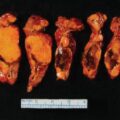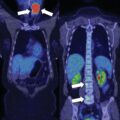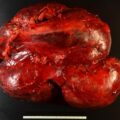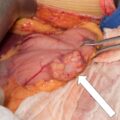##
Cross-sectional computed imaging lacks the necessary accuracy to determine if a patient has unilateral adrenal versus bilateral adrenal disease as the cause of primary aldosteronism (PA). If abdominal computed tomography (CT) does not reveal a large adrenal mass consistent with adrenocortical cancer, adrenal venous sampling (AVS) is an essential localization step in patients with confirmed PA who want to pursue surgical management. The only exception to this rule is the patient who is young, has marked PA, and a unilateral solitary adrenal macroadenoma is documented on adrenal CT (see Case 7).
Case Report
The patient was a 68-year-old woman who had been hypertensive for 40 years. However, she had accelerated hypertension and new-onset diuretic-induced hypokalemia over the past 6 months. Previously her blood pressure was under good control with an angiotensin-converting enzyme inhibitor and hydrochlorothiazide. Due to the hypokalemia, her local physician changed her antihypertensive program to metoprolol (12.5 mg twice daily) and amlodipine (5 mg daily). She took potassium 20 mEq twice daily to correct the hypokalemia. She had no signs or symptoms of Cushing syndrome.
INVESTIGATIONS
The baseline laboratory test results are shown in Table 8.1 . The patient had positive case detection testing for PA with a plasma aldosterone concentration (PAC) >10 ng/dL and plasma renin activity (PRA) <1.0 ng/mL per hour. Due to lack of spontaneous hypokalemia, formal confirmatory testing with oral sodium loading was performed. , The patient was counseled on a high-sodium diet over 3 days, and the 24-hour urine was collected from day 3 to day 4. The patient monitored her blood pressure daily and serum potassium was checked daily. PA was confirmed with the 24-hour urinary aldosterone excretion of 20 mcg and a urinary sodium excretion of 190 mEq (the latter confirming compliance with the high-sodium diet). Clinicians frequently ask what to do if the 24-hour urine sodium is <200 mEq. The 200 mEq cutoff serves as a guide—it is not an absolute, and clinical judgment should be used. In this patient’s case a 24-hour urine sodium of 190 mEq was “close enough” and a repeat test was not needed. The baseline dehydroepiandrosterone sulfate (DHEA-S) was normal, and cortisol suppressed normally with the 1-mg overnight dexamethasone suppression test (DST) (see Table 8.1 ).
| Biochemical Test | Result | Reference Range |
| SodiumPotassiumCreatinineeGFRAldosteronePlasma renin activityDHEA-S1-mg overnight DST24-hour urine aldosterone24-hour urine sodium | 1384.20.8>6018<0.648.9<1.020190 | 135–1453.6–5.20.8–1.3>60 mL/min/BSA≤21 ng/dL≤0.6–3 ng/mL per hour9.7–159 mcg/dL<1.8 mcg/dL<12 mcg if 24-hour urine sodium >200 mEqGoal for oral sodium loading >200 mEq |
An unenhanced adrenal-dedicated CT scan showed a lipid-rich 1.6-cm left adrenal nodule ( Fig. 8.1 ).

